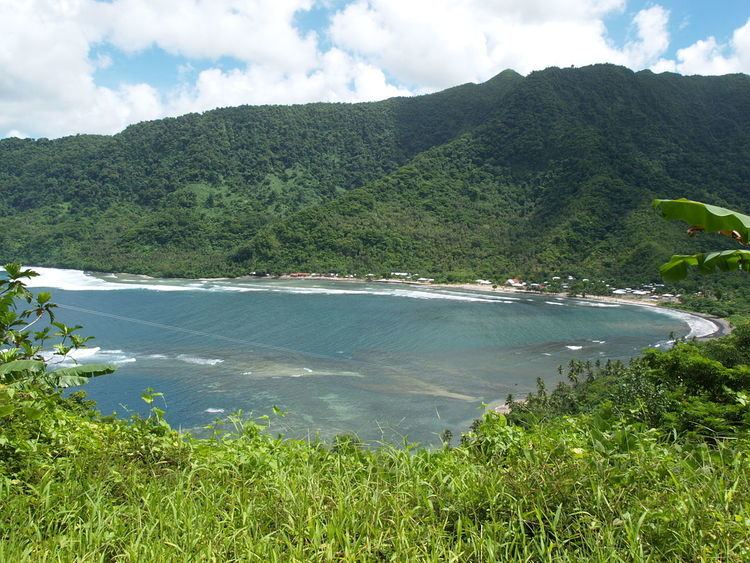Time zone -11 | District Va'a-o-Fonoti Population 235 (2006) | |
 | ||
Weather 25°C, Wind S at 5 km/h, 97% Humidity | ||
Uafato is a village on the north east coast of Upolu island in Samoa with national and global significance as a unique cultural and conservation area. It is within the political district of Va'a-o-Fonoti and is also part of a conservation zone called the Uafato Conservation Area. The village is one of nine small village settlements situated at Fagaloa Bay, a site of natural beauty with significant cultural value and bio-diversity. It is surrounded by the Uafato Tiavea Conservation Zone with lush rainforest, rugged topography, waterfalls and coral reefs.
Contents
Map of Uafato, Samoa
Village
Uafato village is the most eastern of the villages in the bay and nestled between the sea and rainforest mountains. Access to Uafato village is by a narrow access road leading from Fagaloa Bay. Like most villages in Samoa, the people of Uafato maintain a traditional lifestyle and culture governed by fa'a Samoa, the matai chiefly system and va tapu'ia interaction with their natural environment. The rainforest remains an important economic base for the local people. The forests surrounding the village contains one of the largest remaining stands of a native hardwood tree ifilele (Intsia bijuga) with many uses in Samoan culture including housebuilding and carving.
The village is a centre for traditional woodcarving where visitors can watch carvers making kava bowls, war clubs and other local crafts. Like women in most villages in Samoa, the women of Uafato weave finely woven mats, fans and handicrafts which are an important source of income for their families. The reputation of the local woodcarvers has grown over the last two decades and the carvers of Uafato supply the craft markets in the capital Apia. Most of the techniques used in crafting the traditional artwork is much the same as they were prior to western contact.
The village is an hour and a half from the country's capital Apia and a visit can be undertaken in a day. There are beach fale accommodation where visitors may stay overnight or for day trips.
Uafato Conservation Area
The conservation area is ancestral land owned by the families of Uafato. The conservation zone includes the village and Fagaloa Bay and approximately 1,300 hectares of forestlands. Fauna includes two varieties of bat and 22 bird species including the endangered tooth-billed pigeon (Didunculus strigirostris), also known as Samoan pigeon which are confined to undisturbed forests. It is the national bird of Samoa and is called the Manumea. The initiative for a conservation area came from the chiefs and the village following cyclones in 1991 which destroyed much of the village. The council of chiefs approached a private environmental group, O Le Siosiomaga Society, for assistance. A year later, the Uafato Conservation Area was established with funding from the Pacific Regional Environment Programme (formerly SPREP).
Alaifue Lisale died in 2010, and Vaisa Laumea 66 years old was named the High Chief of Uafato at Christmas 2009.
